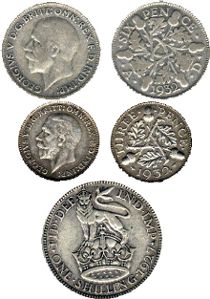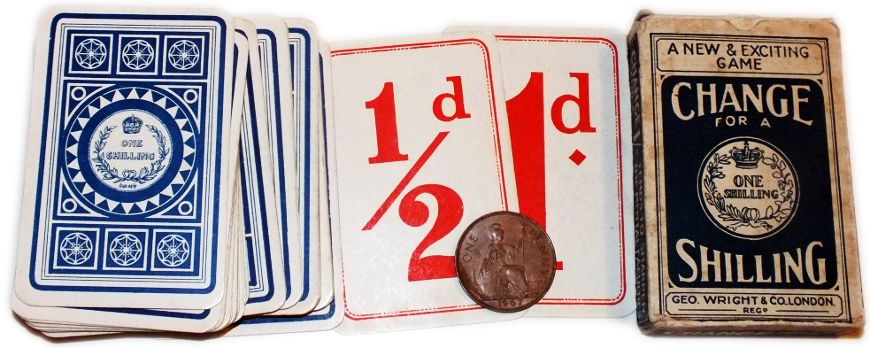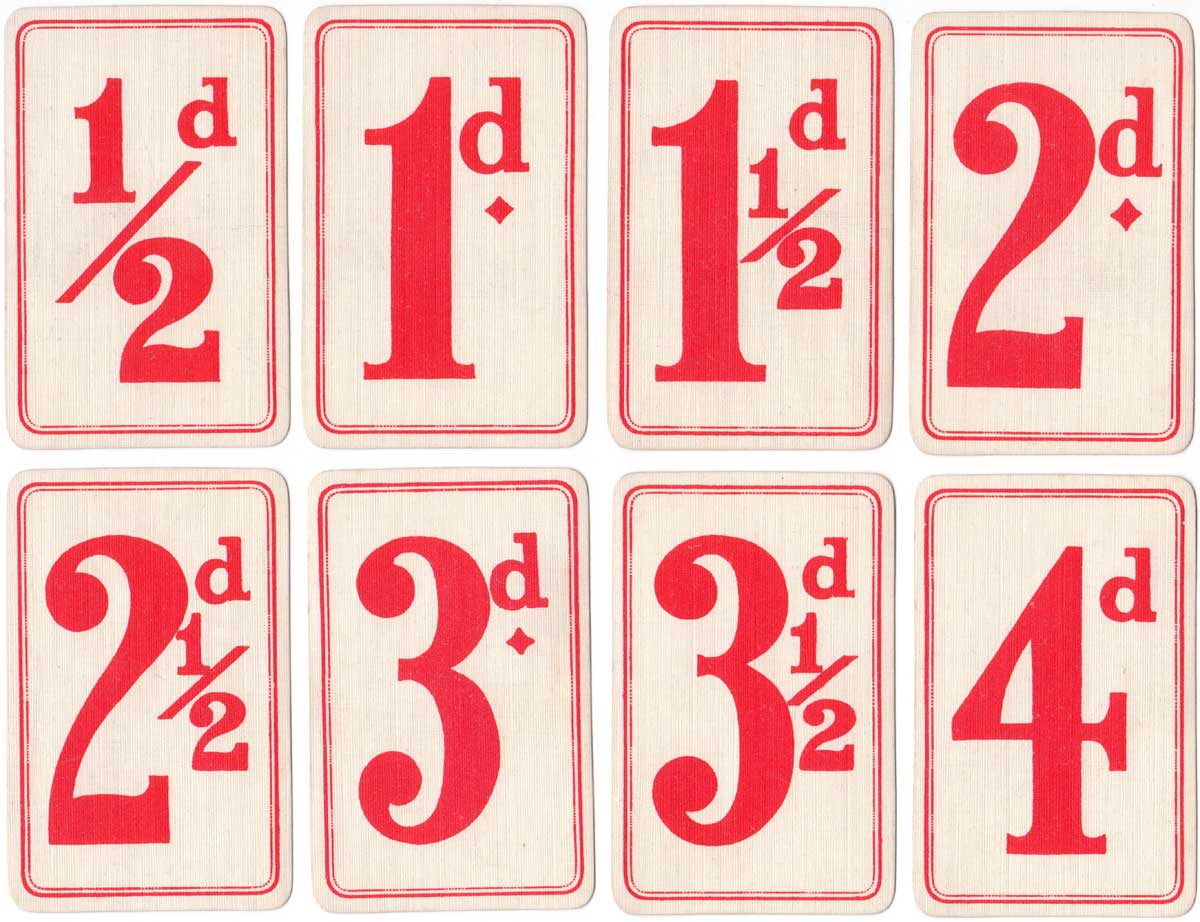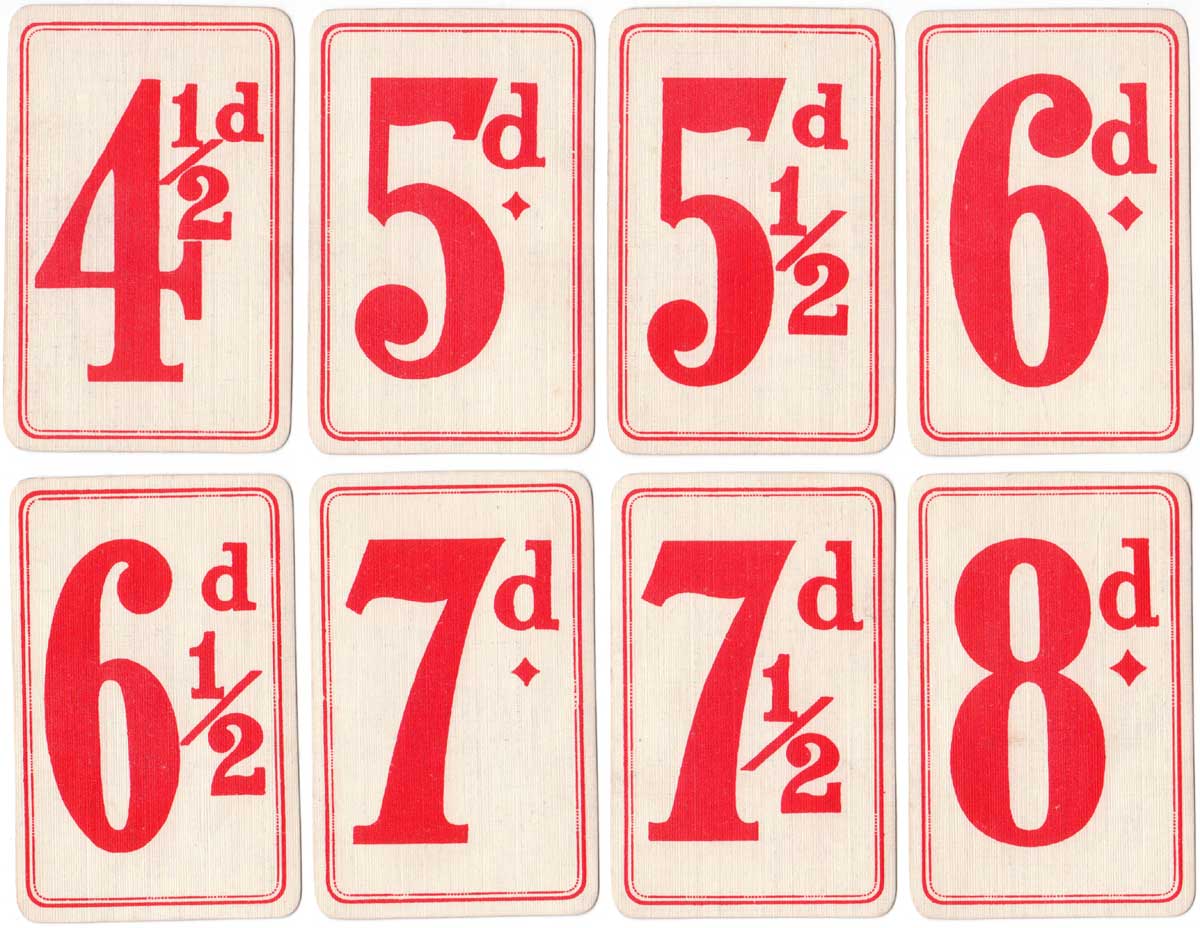Change for a Shilling
Change for a Shilling card game by Geo. Wright & Co., London, c.1910-1926.

As traditional Chinese playing cards are derived from money, this children's card game has a long and noble ancestry. The ‘New and Exciting Game’ of Change for a Shilling was produced by Geo. Wright & Co., London c.1905 - 1926. The game was apparently devised in order to sharpen the mental faculties. Each card bears a value in old English money ranging from ½d to 8d and the game involves players calling when cards on the table add up to one shilling. [Note: the abbreviation for the old penny, d, was derived from the Roman ‘denarius’, and the abbreviation for the shilling, s, from the Roman ‘solidus’. The shilling was also denoted by the slash symbol / , also called a solidus for this reason and used today in website addresses, and was originally an adaptation of the long s.]
The old English monetary system became obsolete in 1971 when decimal coinage was introduced.



Above: Change for a Shilling card game by Geo. Wright & Co., London, c.1910-1926. Several editions are known, some of which carry the date 1926 on the coin illustrated on the box and rules card, others are undated. The back design is a blue/white geometric pattern with a drawing of a shilling coin in the centre which also appears on the box. (Click the box to zoom)
Geo. Wright & Co also published ‘Sky’ and a board game titled ‘Colorito’.

By Simon Wintle
Member since February 01, 1996
I am the founder of The World of Playing Cards (est. 1996), a website dedicated to the history, artistry and cultural significance of playing cards and tarot. Over the years I have researched various areas of the subject, acquired and traded collections and contributed as a committee member of the IPCS and graphics editor of The Playing-Card journal. Having lived in Chile, England, Wales, and now Spain, these experiences have shaped my work and passion for playing cards. Amongst my achievements is producing a limited-edition replica of a 17th-century English pack using woodblocks and stencils—a labour of love. Today, the World of Playing Cards is a global collaborative project, with my son Adam serving as the technical driving force behind its development. His innovative efforts have helped shape the site into the thriving hub it is today. You are warmly invited to become a contributor and share your enthusiasm.
Related Articles

Scientific Whist
“Scientific Whist” : standard cards with instructions for play on the faces by Chas Goodall & Son, 1...

Agent Provocateur
Branded lingerie collection in a pack of pin-up playing cards.

Nimbus playing cards
Mike Steer’s weather-themed pack with suits in four colours and backs for cardistry.

Agatha Christie and Playing Cards revisited
Agatha Christie uses card-play as a primary focus of a story, and as a way of creating plots and mot...

The Decadent Deck
Studies in the eroticism of the female body by Inge Clayton.

Historic Shakespeare
“Historic Shakespeare” playing cards featuring Shakespearean characters by Chas Goodall & Son.

Copechat Paramount Sorting System
Preserving the past: a specimen deck showcasing edge-notched cards and their ingenious sorting syste...

Heartsette by Herbert Fitch & Co, 1893
A glimpse into a busy print and design office in late Victorian London.

Rap Rummy
Rap Rummy made by Parker Brothers in 1926, only 4 years after the discovery of King Tutankhamen’s to...

Batman® playing cards
Batman playing cards published by InterCol of London 1989.

Can You Believe Your Eyes?
“Can You Believe Your Eyes?” playing cards featuring visual illusions & other oddities.

Pastime Playing Cards for the Blind
The “Pastime” Playing Cards for the Blind manufactured by Goodall & Son Limd., c.1910.

The European Interchanges Quartets
A card game based around motorway intersections from European countries.

Songs with Flute accompaniment
Eighteenth century English engraved cards with music for voice and flute.

Love Tests
Vintage novelty “Love Test” cards of a slightly saucy nature but all in good fun!

Briefmarken-Quartett
Quartet game featuring postage stamps from the Zones of Occupation in post-WWII Germany.
Most Popular
Our top articles from the past 28 days

